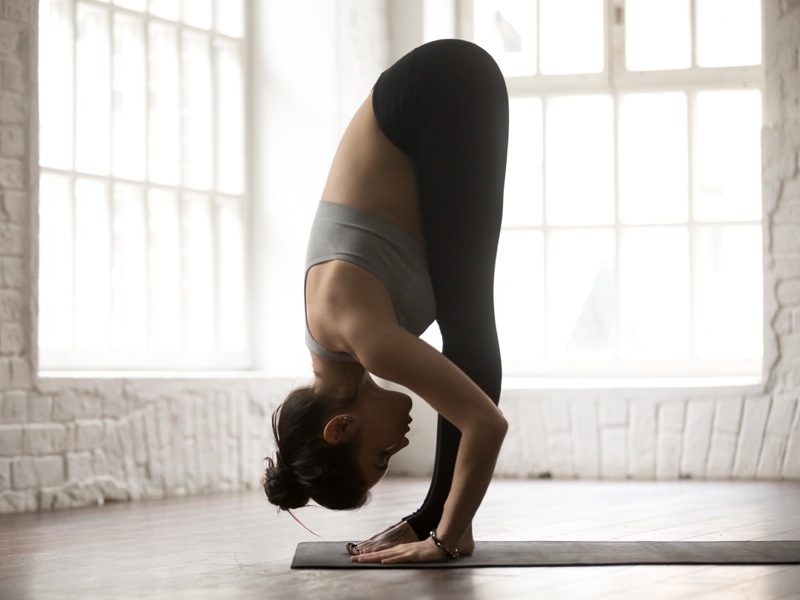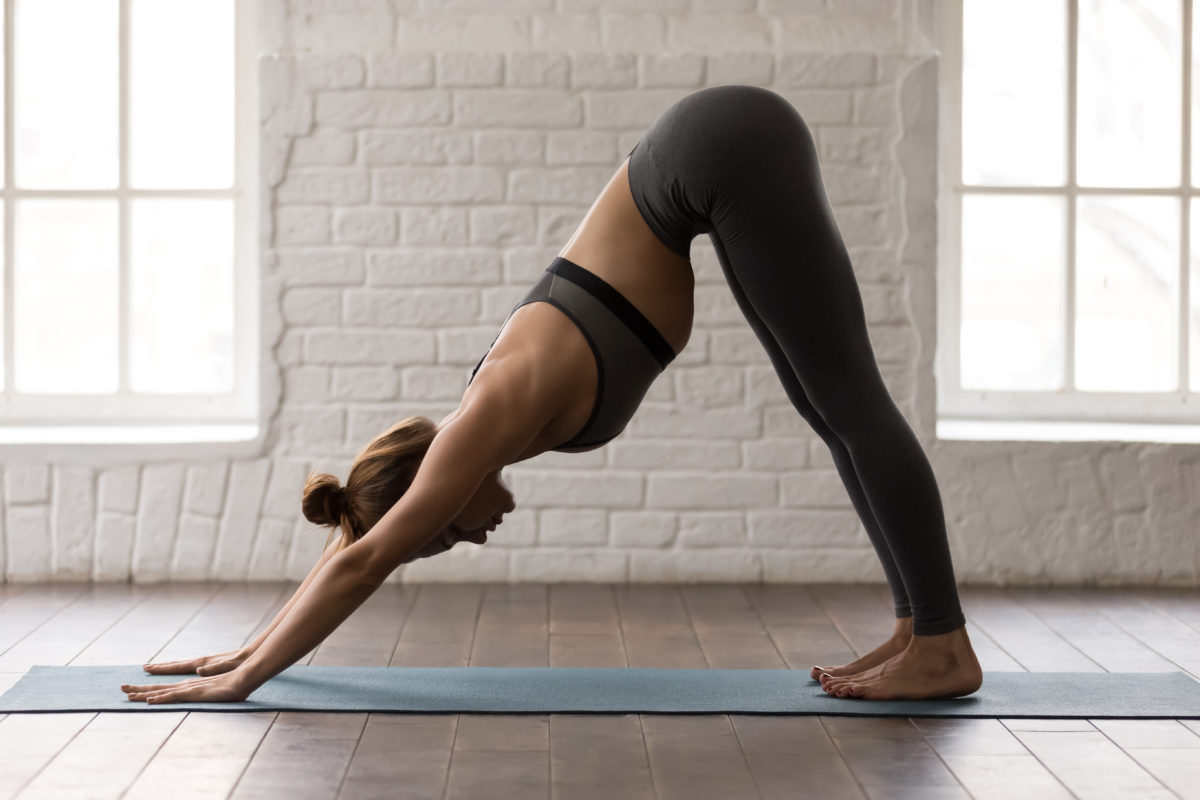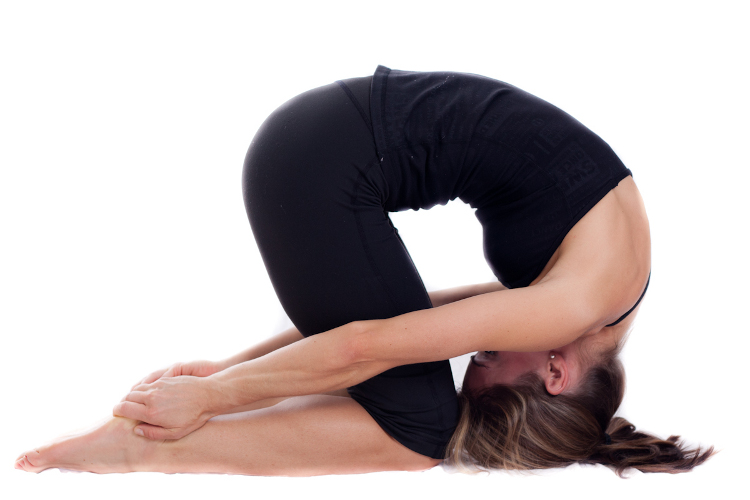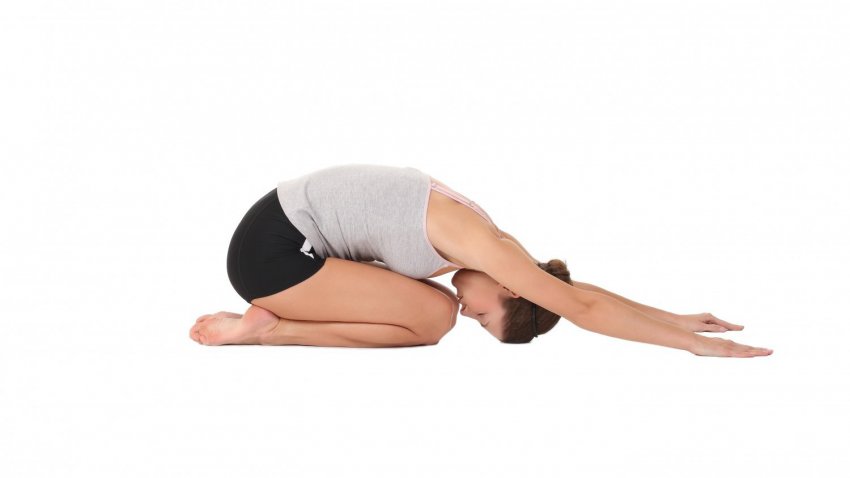How Yoga Can Help Improve Hair Growth & Thickness
6 minuteRead
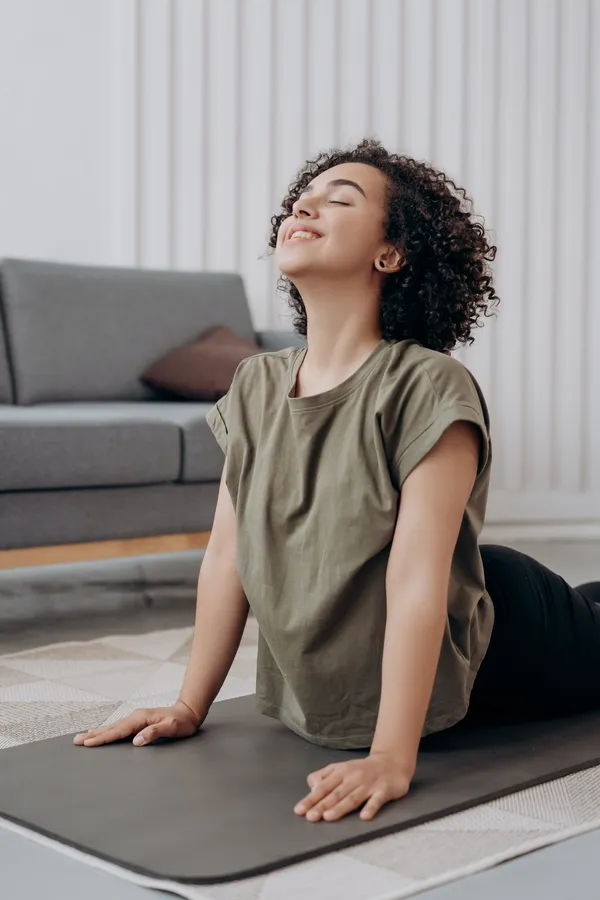
Is yoga the new hair-growth treatment? Some yoga practitioners believe this due to the ability of the practice to reduce stress and increase blood flow to the scalp.
Yoga for hair growth and thickness is becoming increasingly popular as the world learns about the wonders it can perform for hair growth. Yoga poses can help with a variety of hair issues—yoga can stimulate hair growth, reduce hair loss, and improve the overall health of your hair. All you need to do is spread out a yoga mat and strike a pose to achieve the luscious locks you've always desired.
Continue reading to learn how yoga can help your hair, what the research says, and which poses are best for your hair.
How Yoga Can Help Your Hair Growth and Thickness
Yoga may protect against hair loss and promote hair growth in two ways. The first is by relieving stress.
Yoga can help to reduce stress, which can be a cause of hair loss.
According to a 2017 study, excessive stress can cause hair loss. While the exact mechanism is unknown, researchers believe that extreme stress can affect the body's immune system response and (usually) slow hair growth.
Yoga as a practice can aid in stress reduction. It was also discovered that yoga helps to lower serum cortisol levels, which are linked to high-stress levels.
Another study discovered that practising yoga on a regular basis helped reduce inflammatory markers in the body. These may reduce the effect that stress has on the body, lowering the likelihood that a person will experience hair loss.
Yoga can also increase blood flow to the scalp, which can help to reverse hair loss.
Yoga may also help to prevent hair loss by increasing blood flow to the scalp. Poses that are inverted (turned upside down) can increase blood flow to the scalp.
Treatments for hair loss, such as topical minoxidil, also work to increase blood flow to the scalp, which can help reverse hair loss and thus yoga can improve hair growth.
However, keep in mind that yoga only temporarily increases blood flow to the scalp. This is distinct from the long-term effects that using minoxidil on a regular basis may help to elicit.
Furthermore, there is no "recommendation" for how many times per day you should practise yoga in order to see results.
Participants in one of the yoga and stress-related studies practised yoga for an hour on most days of the week, according to the researchers. Less frequent yoga practice, on the other hand, may provide stress-relieving benefits.
Yoga poses to try
The yoga poses listed below may help to relieve stress and increase blood flow to the scalp. We recommend starting with the Sun Salutation series and working your way through the poses.
Pose 1: Uttasana (Standing Forward Bend)
Source: www.vinyasayogaashram.com
This pose stretches the back and legs while folding forward to increase blood flow to the scalp. This is how you do the exercise.
How to do a Standing Forward Bend
- Stand shoulder-width apart with your feet shoulder-width apart and your arms at your sides.
- Bend forward at the hips and extend your arms down your legs.
- Depending on your flexibility, place your fingertips on your knees, toes, or the floor. You can maintain a slight bend in your knees.
- Relax your neck and allow it to hang in this position. Feel the stretch in your back legs. You can improve your balance by leaning slightly forward to the balls of your feet if necessary.
- Hold this position for a few deep breaths. Then, return to a standing starting position by raising your head.
Pose 2: Adho Mukha Svanasana (Downward-Facing Dog)
Source: www.theyogacollective.com
Downward-Facing Dog is a popular yoga pose. It's another inverted pose that promotes blood flow to the scalp while also being extremely relaxing. Here are the specifics.
How to do a Downward-Facing Dog
- Begin by lying on your back on a mat on all fours.
- Switch to a hand-and-feet balance, with your legs hip-width apart and your hands shoulder-width apart.
- Spread your fingers wide and imagine your body's energy flowing through your hands to the mat. Consider your body in the shape of an upside-down V.
- Imagine your spine lengthening to increase the stretch. Tilt your pelvis inward to feel a deeper stretch in your hamstrings.
- Hold this position for three to five breaths before moving on to the next.
Pose 3: Prasarita Padottanasana (Wide-Legged Standing Forward Bend)
Source: www.istockphoto.com
This stress-relieving pose can aid in the circulation of blood to the scalp. You can do this pose by following the steps below.
How to do a Wide-Legged Standing Forward Bend
- Spread your legs wider than hip-width apart, with your feet forward.
- Bend forward from the hip joints and place your hands flat on the floor. For added stability, rest your head on the ground or against a yoga brick.
- Hold the pose for a total of ten breaths.
- Inhale while raising your torso, flattening your back, and placing your hands on your hips.
Pose 4: Sasangasana (Rabbit Pose)
Source: www.yogaasan.com
This stress-relieving pose also improves blood flow to the scalp without requiring you to be completely upside-down. This is a good exercise to do before or after moving into or out of Child's Pose (see below). Follow the steps below:
How to do a Rabbit Pose
- Kneel on the floor, pointing your feet and touching the tops of your feet to the floor.
- Bend forward at the hips and forward at the head, placing the top of your head on the ground. If necessary, place your hands on either side of your body for support. You'll be looking down at your thighs.
- Lace your hands behind your back and raise your arms in the air to stretch your chest and shoulders.
- If the stretch is too far without it, you can place a yoga brick under your head.
Pose 5: Balasana (Child’s Pose)
Source: www.yogauonline.com
After completing a yoga pose, a common neutral pose to return to is Child's Pose. It's a relaxing, stress-relieving pose that can be done almost anywhere. Take a look at the following steps.
How to do a Child’s Pose
- Kneel on the floor, your legs hip-width apart.
- Exhale as you bend forward, folding your hips and laying your torso over your thighs.
- Stretch your arms forward, palms down, and place them on the floor. Consider your body moving in two directions: your hands reaching forward and your pelvis stretching backwards.
- Take several deep breaths and hold this pose for 30 seconds for as long as you like. As you perform this pose, imagine the stress and anxiety leaving your body.
Other remedies for hair growth
Yoga can play a larger role in your overall health and hair-growth strategy. The following suggestions may also aid in hair growth:
Consume a healthy, well-balanced diet rich in lean proteins. Protein is a major component of healthy hair, and a lack of protein may cause hair growth to be slowed.
Lean cuts of meat, skinless chicken, fish, eggs, beans, low-fat dairy, and nuts can all help you up your protein intake.
Excessive supplementation with the nutrients vitamin A, vitamin E, or selenium has been linked to hair loss. Read the recommended daily allowance on the back of your supplement and only take the amount specified.
Take care of your hair gently. This includes avoiding heat styling whenever possible and avoiding pulling the hair into overly tight braids or ponytails, which can lead to hair breakage and loss.
Massage your scalp. Massaging your scalp and putting your fingers in your hair can increase blood flow and reduce stress. There is no set time limit for scalp massage; simply continue until you feel the stress-relieving effects.
It's important to remember that there are medical causes of hair loss, such as alopecia areata, that can't be treated with lifestyle changes alone. If you're worried about your hair loss, consult a doctor about possible solutions.
Write, Record and Answer! Consume Unlimited Content! All you need to do is sign in and its absolutely free!
Continue with one click!!By signing up, you agree to our Terms and Conditions and Privacy Policy.




